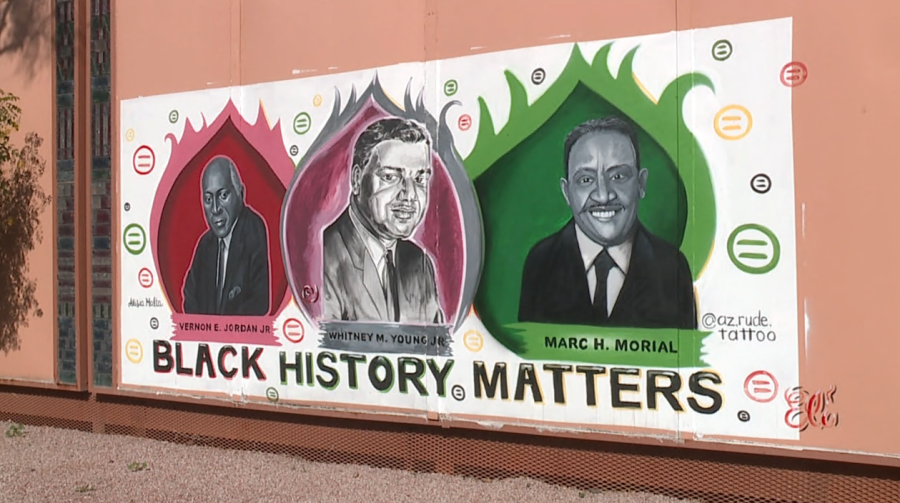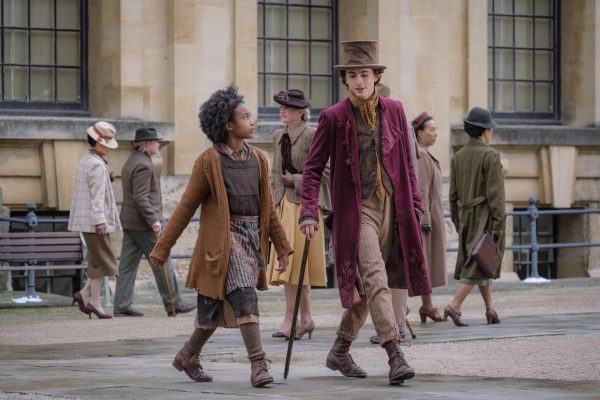Black History Month murals in Phoenix celebrate contributions of Black men and women
The city-wide effort to celebrate Black History Month has received national attention
February 17, 2022
Every year, the month of February is dedicated to honoring and bringing recognition to the triumphs and struggles of African Americans throughout U.S. history. Every February, Black History Month is celebrated to coincide with the birthdays of Abraham Lincoln, the president who abolished slavery, and Frederick Douglass, a formerly enslaved man who escaped and became a prominent leader in the abolitionist movement.
Walk through the halls of RV’s upper C-wing and you’ll find the hallways adorned with images of historical and contemporary figures who have supported equality and justice for Black men and women in America. Using art and murals to celebrate Black History Month is something that numerous organizations, cities and groups engage in.
For the second year in a row, the Shining Light Foundation has gathered artists together to create murals across Phoenix, AZ to pay a tribute and celebrate the achievements made by Black Americans for Black History Month. This year, over 20 painters contributed to the stunning art that now adorns Phoenix’s buildings. Each painting depicts a different Black social leader, ranging from groundbreaking boxers like Muhammed Ali and Jack Johnson to more modern leaders such as Simone Biles and the Phoenix Suns.
Maria Reed, one of the artists, focused on three entrepreneurs who’s grand achievements are often overlooked and forgotten in her mural. Reed’s painting featured O.W. Gurley, Mary Ellen Pleasant and Madam C.J. Walker. Gurley was the founder of Black Wall Street, which was a prosperous business district and considered the epitome of a self-sustaining community in the 1920s. Pleasant was a self-made millionaire known as the “one-women social agency,” and Madame C.J. Walker was America’s first female millionaire as a result of her line of cosmetics and hair care products for Black women.
“It’s not just about looking at the art, it’s about knowing who these people were,” said Shining Light founder and CEO Gizette Knight. The aim of the murals was to not only bring attention to lesser known figures, but to create a new dialogue about them and their stories.
Knight additionally sheds light on the importance of each mural, stating, “I think it’s important for the young people to see these figures because it creates value in them, it empowers them. I could be more than just my circumstance.” Knight added how the foundation will continue this tradition year after year.
Representation of Black leaders is often lacking in modern media, so it is important for young children to be able to see representations of themselves in as many mediums as possible.
Should you ever visit Phoenix, the locations of the murals are posted and are a must to check out. Black History Month is a time not only to recognize individuals from the past, but also those living in the present. It’s a time to educate ourselves and to share the stories of those who helped build the America we know today.












